The bloke and I visited The Royal Mint Experience yesterday and got to see and press our own one pound coin with the new design that will be circulated later in the year. The Royal Mint Experience only opened in May last year, so it's not even been open for tours for a year. I've previously done a tour of the US Mint in Colorado; there's also one in Philadelphia, PA. The experience is located at the site of the factory where all coins are made for UK circulation and for other countries. This post is about my experience.

We arrived for the first tour of the day and had a wander around the factory, which is located near Cardiff in Wales. The building looks new and has coin-coloured panels (gold/silver/copper) along the front. At the front is one of the Shaun the Sheep charity statues that The Royal Mint made; the Gromit that they made is inside the building.
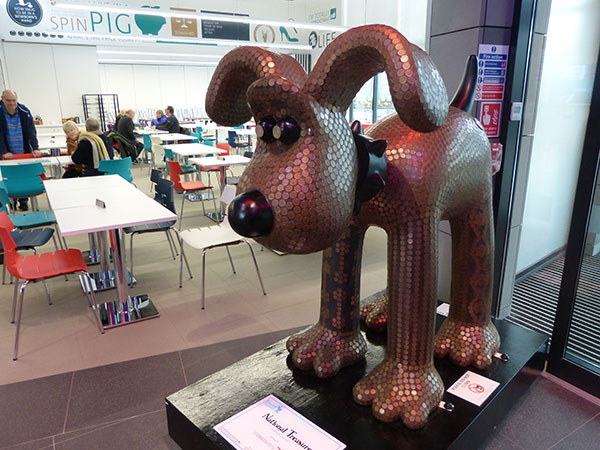
Also inside the building is a classic MINI car covered with coins.
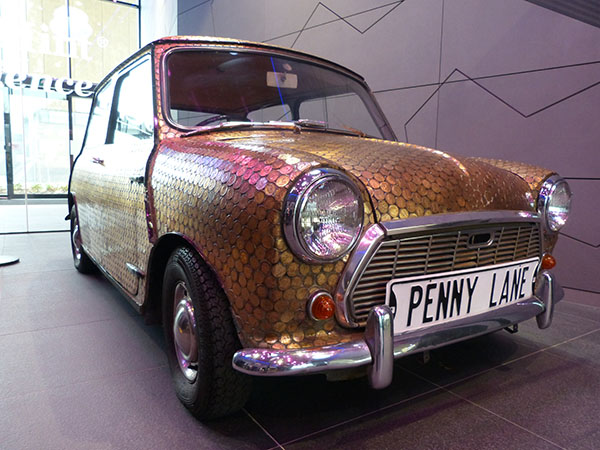
We had a few minutes to wander around the shop before the tour began. We were then ushered into a room with a short introduction video before being taken to the factory building to be shown some equipment and demonstrated how coins are made using the various bits of machinery. We were not allowed to take photographs here or anywhere inside the factory; we were allowed to take photographs at the museum in the original building later.
The coins are made of mixed metals, and we were shown how they were given their 'edge' to prevent them from sticking together. We were then shown how the coins were struck with the designs using the moulds. The machines pressing them work very quickly and press using two tonnes of weight. After the discussion, we could watch some of the workers making/inspecting the coins. We could see coins fall out of the machinery into large boxes. We had to look at this from a distance.
After looking through a couple of these windows, we went into another room where a pressing machine was waiting for us. The workers were controlling this, and we paid to press our own new pound coin. The new pound coins are going to be circulated later in the year, and they have several sides and two-tone colour. The problem was that the old pound coin was easy to copy, and many of them are fake. Workers had the blanks (unpressed coins) and put them into the machine one-by-one while we pressed a button for the machine to press two tonnes of weight onto the coin. The new pound coins have to be pressed twice.
The different colour of material 'locks' in together due to the rim created along the edging of the coins, so they are two separate pieces. This is how the two-pound coin is made as well.

After we struck the coin, we were ushered back into the original building where the tour resumed. This was the museum area, and it is self-guided. Photographs can be taken here. I have highlighted some of these bits below.
The first coint to be pressed at The Royal Mint (in the Tower of London) was the "Alfred the Great Silver Penny" (1). It was pressed at the time during Viking invasions. Isaac Newton was a warden at The Royal Mint for a few years, and he used science to make coins harder to be counterfeited. His name popped up in The Royal Mint Experience a few times, and we saw a medal produced with his likeness (2). The last coin to be pressed at The Royal Mint at Tower Hill before the factory moved to Wales was an image of the Tower Hill location (3), and it is on display. In 1934, Queen Mary had a tour of The Royal Mint when it was at Tower Hill, and she brought Elizabeth (now Queen) and her sister along. Their signatures are on display in the museum (4).
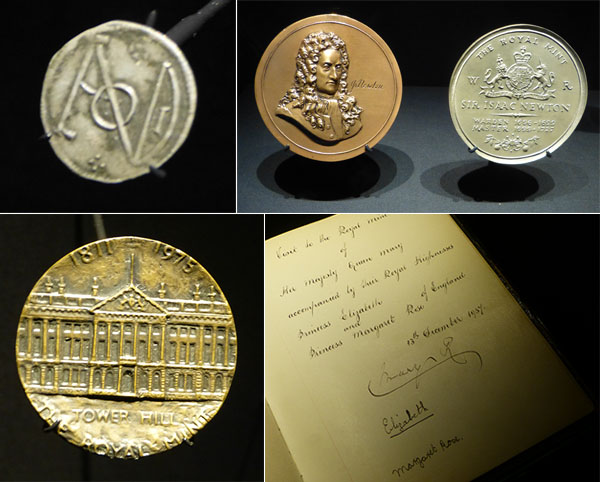
1) Alred the Great silver penny; 2) Isaac Newton medal; 3) the last coin to be struck at The Royal Mint at Tower Hill; 4) The Royal Mint visitor book signed by Queen Mary and daughters Elizabeth and Margaret Rose
In 1968, The Royal Mint moved to Llantrisant in Wales. The production of coins had outgrown London, so it was moved to Wales due to support by a Welsh Member of Parliament. The new factory was created because of the introduction of the currency system that is now in use (instead of the old decimal system). On its opening day, Queen Elizabeth pressed the first coin (5). A lot of marketing went into getting people familiar with the new currency system (6 and 8). This year, we have a new design for the pound coin, and the design was inspired by 12-year old student David Pearce. A model of it is on display (7).
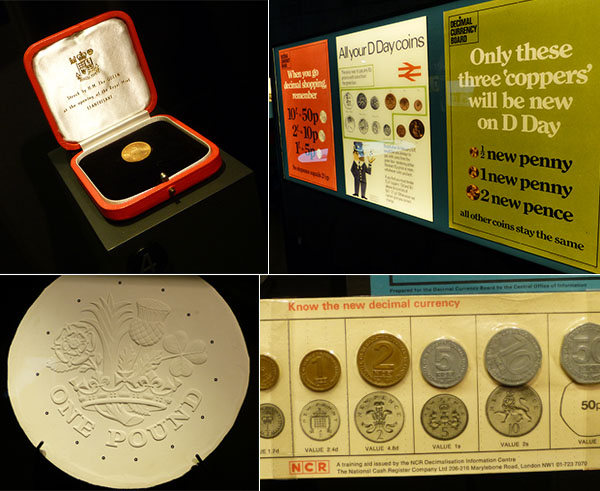
5) Queen Elizabeth pressed the first coin at Llantrisant; 6 and 8) Marketing to help with the new currency system; 7) The new one pound coin design
The Royal Mint also creates coins for other countries in the world, and we saw several of these on display. We also saw a coin that has been at the ocean for many years, sunk with a hoard of gold coins and recovered eventually. We also saw the moulds for the presses and learned about the oldest quality assurance in the history of the world: the gold and coin quality. This is conducted every year by the Goldsmith livery company. Samples of coins from all of the batches are kept for this process each year.
In addition to the coins, The Royal Mint Experience museum had a display dedicated to different medals, such as war and sporting medals. They made the medals for the Olympic Games in 2012.
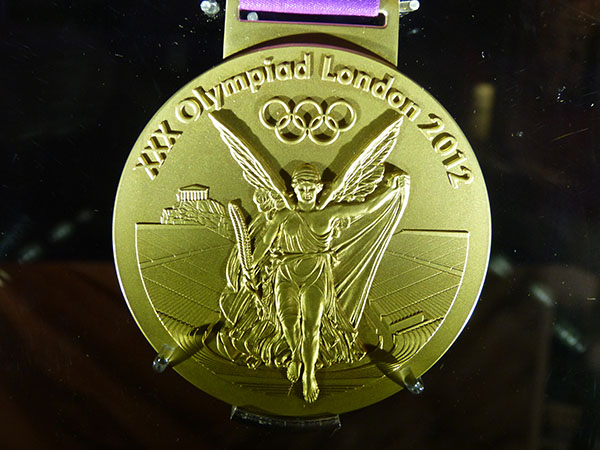
2012 Olympic Medal
After the experience, we went across the road where there is a pub/hotel that were having a carvery. We were really impressed with the food, and the carvery was very popular with local people too.
Have you been to The Royal Mint Experience yet or seen the new one pound coin? You can still visit and press your own coin. (Note that I booked the experience myself, so this is not endorsed by The Royal Mint.)
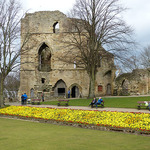
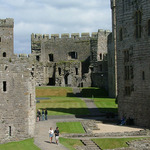
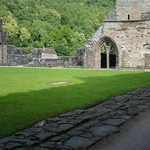
Leave a comment